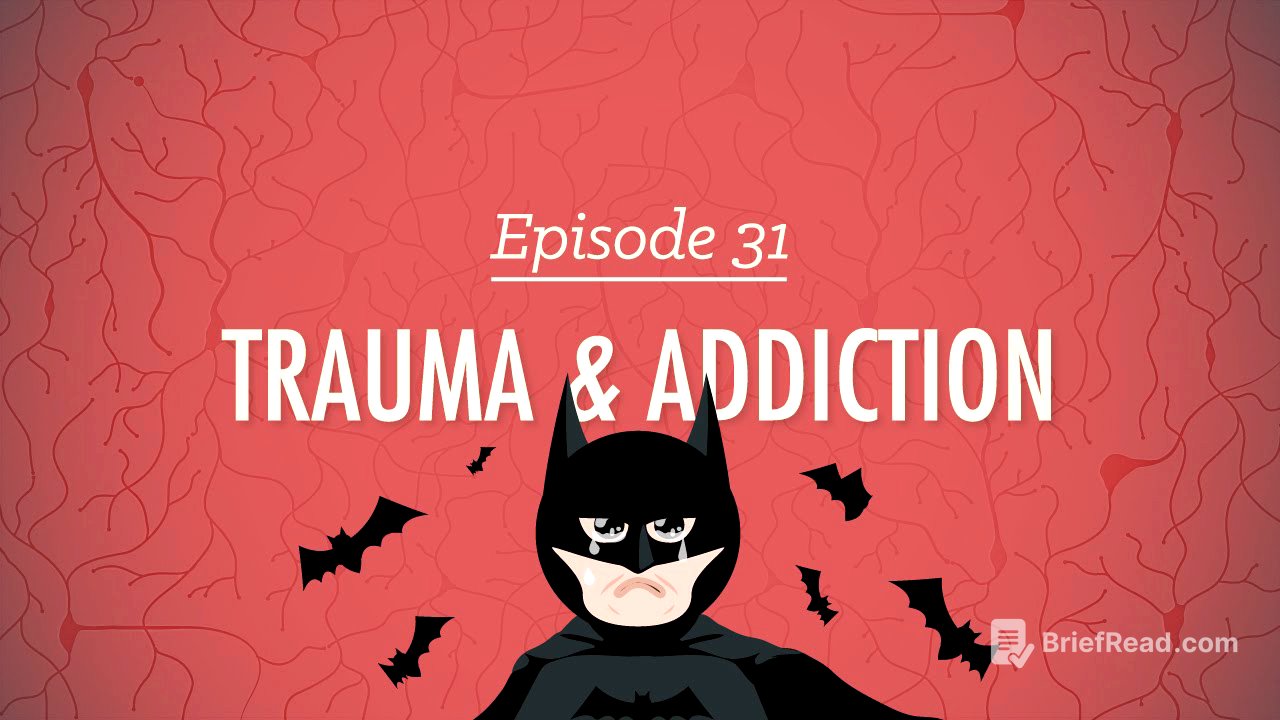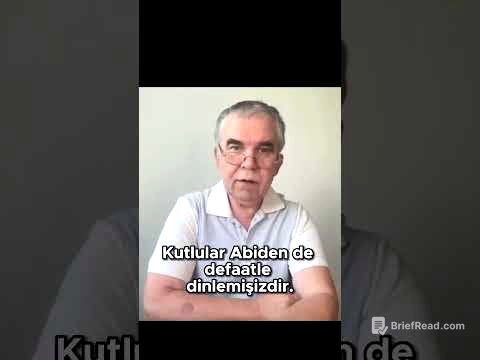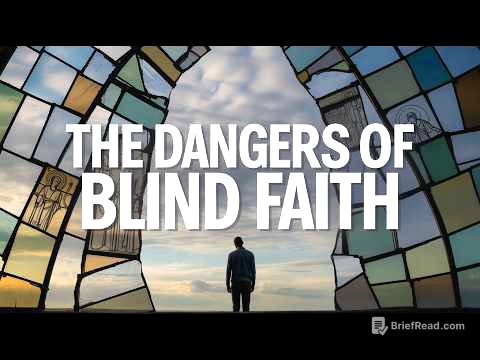TLDR;
This video explores the psychological impact of trauma, focusing on Post-Traumatic Stress Disorder (PTSD) and addiction, while also highlighting the potential for post-traumatic growth. It discusses the symptoms and causes of PTSD, its connection to substance abuse, and the dual diagnosis model for treatment. The video also touches on the experiences of veterans and the role of trauma in addiction, emphasizing the importance of support and resilience in overcoming these challenges.
- PTSD symptoms include reliving the event, avoidance, hyperarousal, and negative changes in emotions and beliefs.
- Trauma and addiction are often intertwined, requiring dual treatment approaches.
- Post-traumatic growth is possible, where individuals experience positive psychological changes after trauma.
Introduction: J.R.R. Tolkien and Trauma [0:00]
J.R.R. Tolkien, a World War One veteran, experienced significant trauma during the war, which he processed through writing fiction. His works, such as "The Hobbit" and "The Lord of the Rings," reflect themes of war, human nature, loss, and growth, serving as reminders of how trauma can affect individuals. While many people experience trauma and exhibit stress-related behaviors that usually fade, some develop psychological disorders like PTSD or addiction as coping mechanisms. Tolkien was able to channel his trauma into something meaningful, demonstrating the possibility of post-traumatic growth.
Understanding PTSD: Symptoms and Manifestations [1:57]
Trauma can manifest in various forms, leading to symptoms such as nightmares, flashbacks, avoidance, fear, guilt, anxiety, rage, and insomnia, which can significantly impair a person's ability to function. When these symptoms persist, it may be diagnosed as Post-Traumatic Stress Disorder (PTSD). PTSD, once known as "shell shock," is a psychological disorder resulting from experiencing or witnessing a traumatic event. The symptoms are categorized into four clusters: reliving the event, avoiding associated situations, excessive physiological arousal, and pervasive negative changes in emotions and beliefs. PTSD patients may also experience numbing, dissociation, and altered perceptions of reality.
The Connection Between Trauma and Addiction [3:23]
Untreated anxiety or mood disorders can lead individuals to seek coping mechanisms, with substance abuse being a common but unfortunate choice. Addiction and trauma are closely linked, making recovery from one difficult without addressing the other. Studies show a high prevalence of substance abuse among veterans with PTSD and women who have experienced sexual assault. Psychologists initially understood PTSD through fear conditioning, but now recognize it can also be a moral injury, encompassing the impact of one's actions or inactions on others.
Case Study: Drone Operators and Moral Injury [4:26]
Brandon, a combat drone operator, experienced psychological trauma similar to soldiers on the ground, despite being physically removed from combat. Diagnosed with PTSD, he suffered intrusive memories, nightmares, depression, anxiety, and substance abuse, highlighting that trauma can stem from moral injuries, not just direct physical threats. This case illustrates that the psychological impact of trauma can affect individuals in various roles, not just those in direct combat situations.
Risk Factors and Brain Changes in PTSD [5:12]
The likelihood of developing PTSD varies among individuals due to complicated risk factors. Genetic predispositions, context, and environment play significant roles. Childhood abuse, for instance, can both prepare individuals for difficult experiences and increase the likelihood of employing avoidance strategies, which can worsen psychiatric symptoms. In the brain, PTSD shares similarities with anxiety disorders, with the limbic system flooding the body with stress hormones. Neuroimaging suggests that trauma can damage and shrink the hippocampus, affecting memory consolidation and leading to vivid flashbacks and nightmares.
Post-Traumatic Growth and Resilience [6:31]
Despite the challenges of PTSD, some individuals experience post-traumatic growth, achieving positive psychological changes through treatment and social support. Tolkien's ability to transform his wartime experiences into powerful stories exemplifies this. While suffering can be detrimental, it can also lead to strength and growth. However, many trauma victims turn to self-medication, leading to substance abuse or dependence issues.
Understanding Addiction and Dependence [7:09]
Addiction or dependence is defined as compulsive, excessive, and difficult-to-control substance use or behaviors that interfere with ordinary life. This can manifest as over-consuming drugs or alcohol, or compulsively engaging in activities like gambling, eating, shopping, exercising, or having sex. Addiction can involve physical dependence, marked by withdrawal symptoms, or psychological dependence, where the substance or activity is needed to relieve negative emotions. Often stigmatized, addiction is frequently a reaction to stress and psychological problems, stemming from an inability to cope in other ways.
The Dual Diagnosis Model of Treatment [8:24]
Addiction is often secondary to deeper issues related to stress and difficult emotions, influenced by both chemistry and individual differences. People respond differently to drugs and behaviors, with some able to use in moderation while others cannot. Recovery needs vary, with some requiring complete sobriety and others potentially regaining control over time. Support can range from self-help to professional intervention. The debate continues whether addiction is a mental illness, a physical disease, or both, and whether addiction and dependence are the same. Treating the underlying problem is crucial for recovery, and the Dual Diagnosis Model addresses both addiction and underlying psychological issues simultaneously, especially in cases rooted in emotional trauma like PTSD.
Hope and Healing [9:45]
Despite the complexities of PTSD and substance dependence, healing is possible with the right support and resources. Humans are resilient and can overcome significant challenges with proper nurturing and practice. The video recaps the causes and symptoms of PTSD, the relationship between trauma and addiction, the need for dual treatment, and the potential for post-traumatic growth, drawing wisdom from Frodo Baggins.








